How the Montbeliarde breed adds value to a dairy business
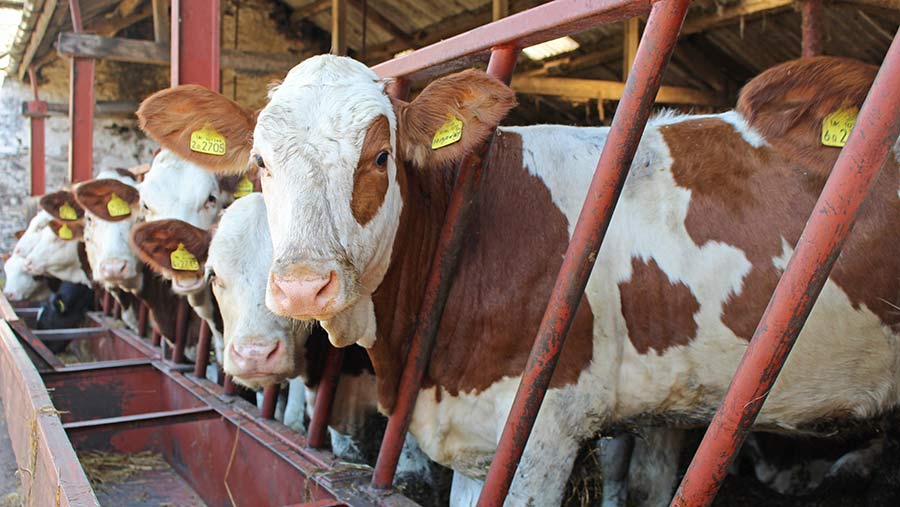
A switch from Holstein cows to breeding pure Montbeliardes has resulted in better fertility, milk constituents, cow health and calf and cull cow value.
For dairy farmer Michael Wilson of Monk Foss Farm, Whitbeck, Cumbria, the decision to dip his toe in water with the Montbeliarde breed started 15 years ago when he felt the Holstein breed was getting too fine.
Not only did this cause fertility issues, but it was harder getting the finish on the bull beef.
See also: How top Irish dairy farmers produce 16.5t grass per hectare DM/ha
The idea to introduce Montbeliarde into the herd came about after attending a farm open day. Mr Wilson recalls being impressed with their yields, excellent fertility and the cull cow and beef calf value they could achieve because of their dual purpose.
“I went away from the open day realising the Monty breed was not just a big beefy cow, but a commercial animal that could add value to our business.”
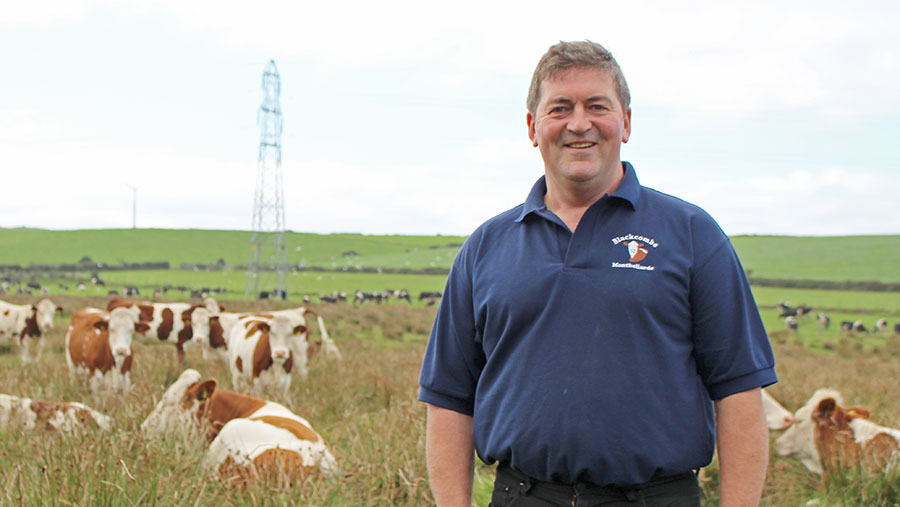
Michael Wilson
In December 2002, Mr Wilson, who farms alongside his brother Brian and dad John, established Blackcombe Montbeliardes with 14 pure cows. They decided to run Montbeliarde alongside the predominately black-and-white herd as an experiment, but by 2006 half the herd was pure Montbeliarde. They opted to run a pure herd of Montbeliardes as they saw the opportunity to sell cows and bulls if they invested in good genetics.
Farm facts
- Farming 162ha
- Milking have 204 pure Montbeliardes, two cross-bred cows and 34 black and whites
- Low yielder grazing throughout summer and buffer fed at night
- Montbeliardes have reduced mastitis in the herd with 34 cases out of 235 cows in 2017
Cows were sourced from France as well as herds in the UK and Ireland. Type, yield and milk constituents played a key part in their buying decisions.
In 2015, the Wilson’s purchased a herd of 67 cows from the second-highest yielding herd in France as well as a further 26 cows from France that year too. Now they have 204 pure Montbeliardes in the herd, two cross-bred cows and 34 black and whites.
Financial benefits
Although Holstein cows average 200 litres a cow a year more compared with the Montbeliardes, they are more than paying their way, according to Mr Wilson (‘Comparison of Montbeliarde and Holstein cows at Monk Foss Farm’, below).
In fact, the Montbeliarde calves, which are sold at eight to 10 weeks and are averaging £265 or when crossed with British Blue upwards of £430, are adding 3p/litre on top of the milk price as well as the cull cow value of 2.85p/litre.
Two Hereford sweeper bulls are used and heifer calves are sold into Scotland for about £300 and bull calves £400 apiece.
“When the milk price is down then the calf and cull cow value help price stability,” he explains.
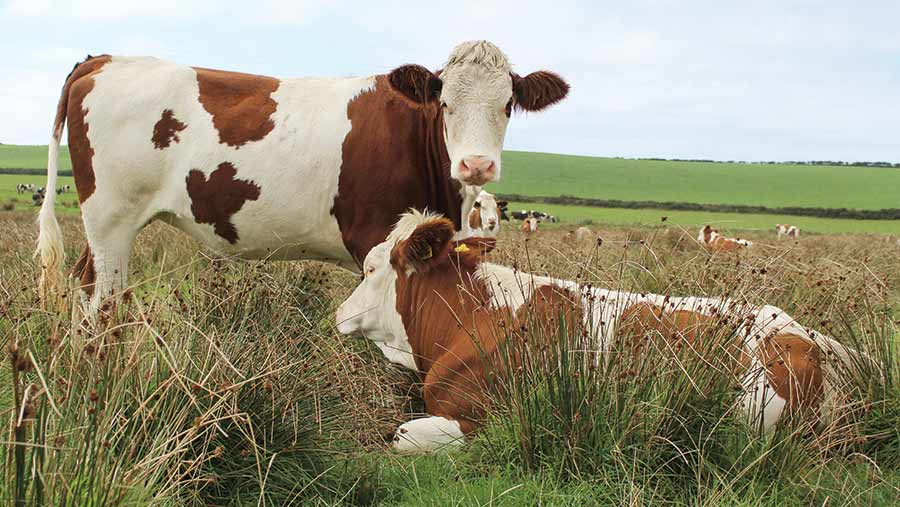
Genomics
Now the farm has a substantial number of Montbeliardes they are fine-tuning the breeding in the herd and are the first Montbeliarde breeders in the country to use genomics for genetic selection.
Mr Wilson works closely with French breeding company Coopex to select the right bulls.
This year they have genomic tested 48 heifers. The best heifers will be served with sexed semen as well as the best 40-50 cows.
Working with Coopex breeding consultant Ferreol Roche they select which bulls, both proven and young genomic bulls, to use on which cows twice a year. They carefully select each bull to complement each heifer and cow. For example, if there’s a good heifer, but she lacks in fat and protein they will select a bull that has positive fat and protein.
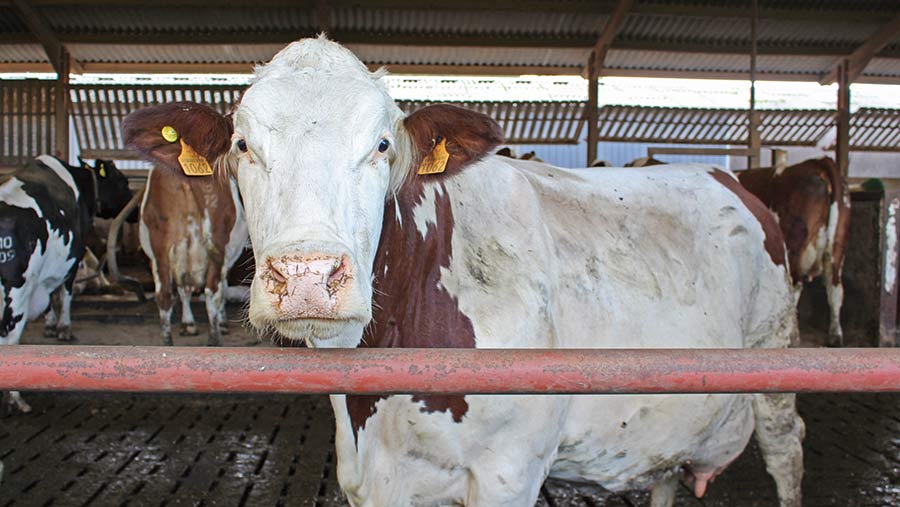
ISU selection index
Mr Wilson doesn’t select using profitable lifetime index (£PLI). Instead, he uses the French Index called ISU. Production and yield traits are calculated using the best linear unbiased prediction model that evaluates all the attributes of the selection index, using reference sires and accounting for different environments and the genetic influence. ISU is similar to the American net worth and, while heavily influenced by production, it places an emphasis on the functionality of the animal.
The higher the ISU value the better the animal. Production traits form 45% of the ISU value and the rest is made up of fertility (18%), udder health (14.5%) production life (5%), muscularity (5%) and type final score such as udder, legs, rump composite (12.5%).
“We don’t want to be breeding extreme animals we are selecting on type and want a cow with good body and legs. We are supplying Arla and are paid on fat and protein so that is important to us too,” explains Mr Wilson.
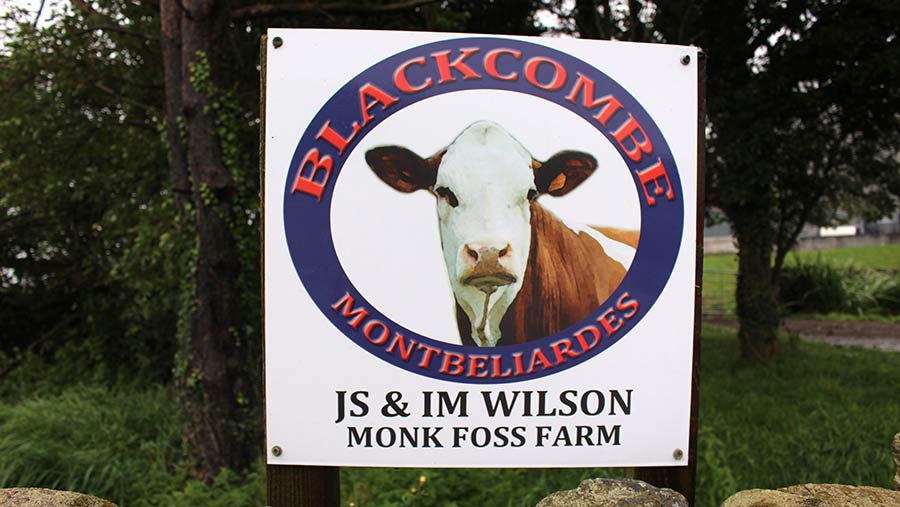
Production
This focus on production, fertility and functionality within the breeding programme is demonstrated by what the cows are achieving.
The herd’s highest-yielding cow gave 13,960 litres in 305 days and this year is predicted to do 14,900 litres. The vast majority are also holding to first service.
Mr Wilson says: “We had one cow that calved at 23 months old, had her second at 32 months old and her third at 44 months old and was back in calf with her fourth calf before she was four years old. She was a 10,000 litre cow, too.”
|
Comparison of Montbeliarde and Holstein cows at Monk Foss Farm |
||
|
Value |
Montbeliarde |
Holstein |
|
Average calf value (£) (purebred) |
£265 |
£50 |
|
Calf value (£) (cross with British Blue) |
£430 |
£330 |
|
Litres |
8,705 or 30 a cow a day |
9,000 |
|
Fat (%) |
4.12 |
3.89 |
|
Protein (%) |
3.42 |
3.18 |
|
Average straws per mating |
1.7 |
2.4 |
|
Calving index (days) |
387 |
428 |
